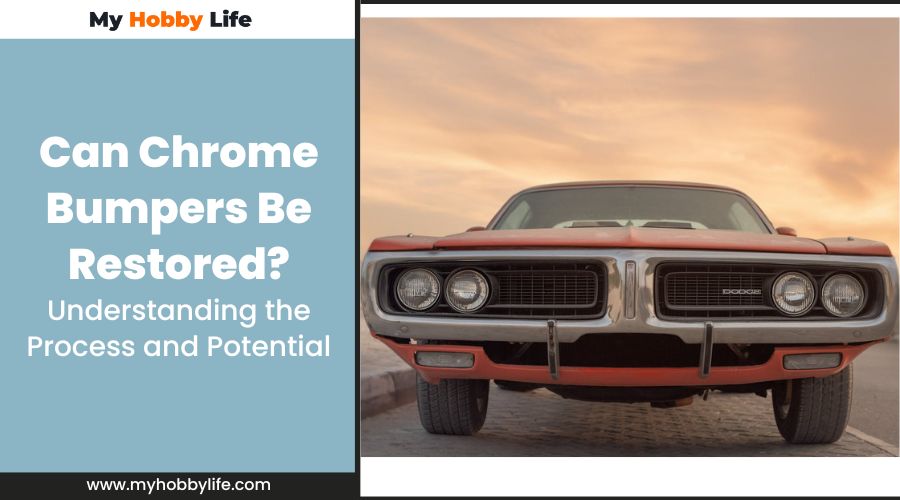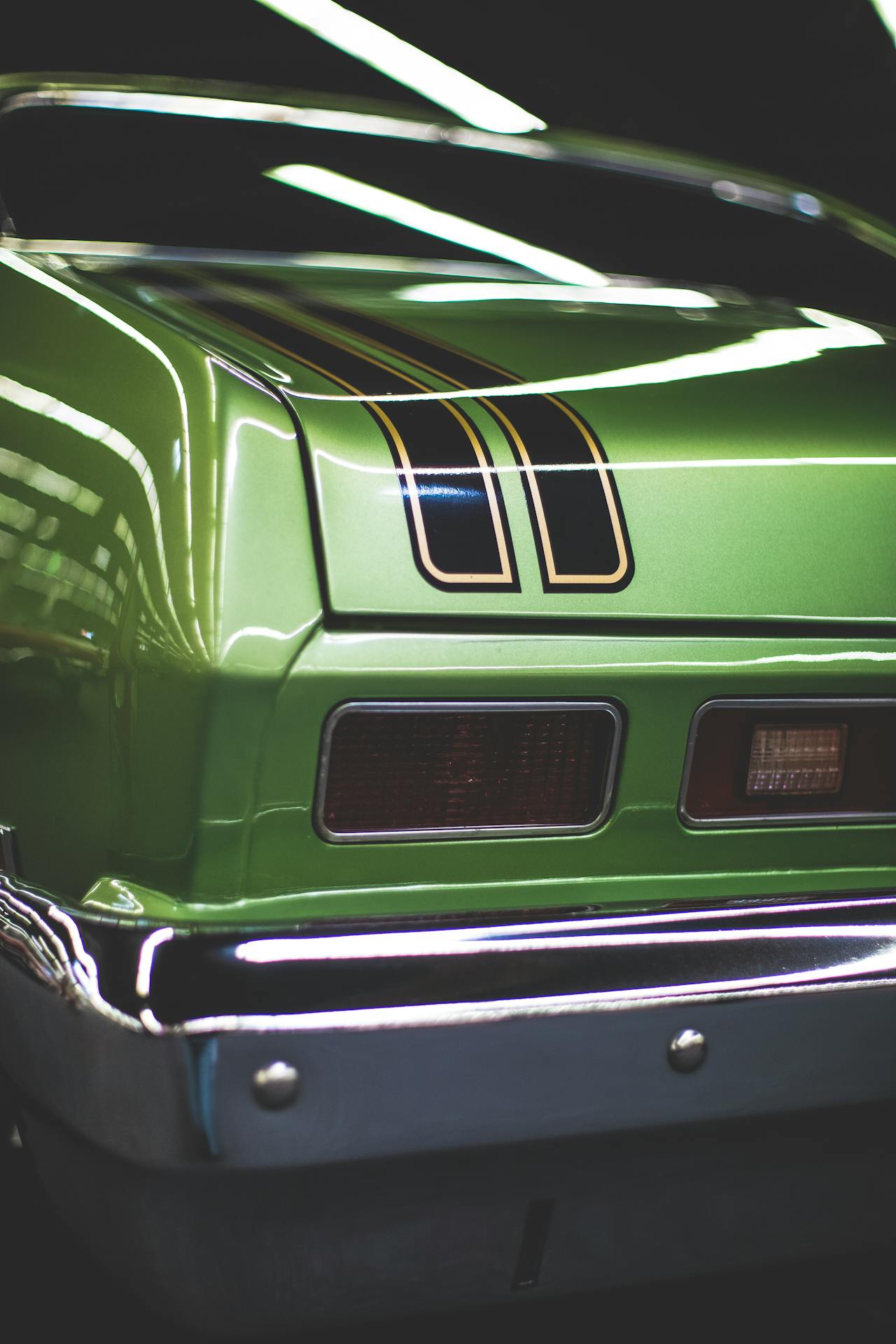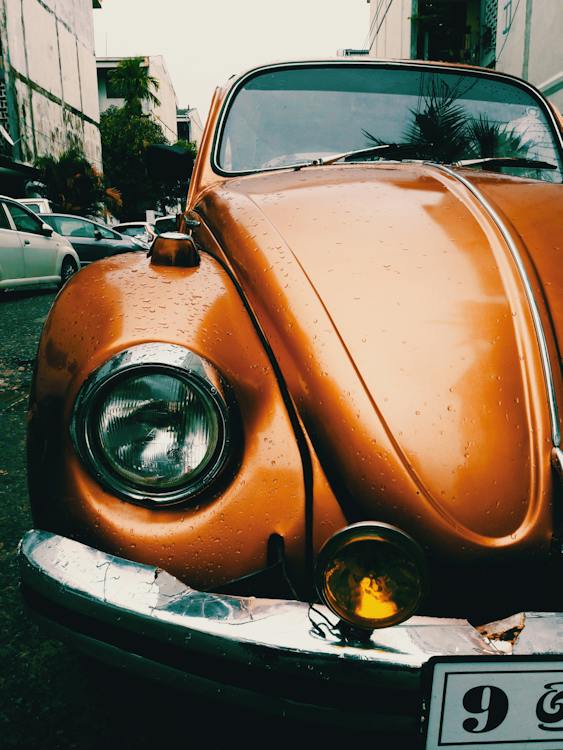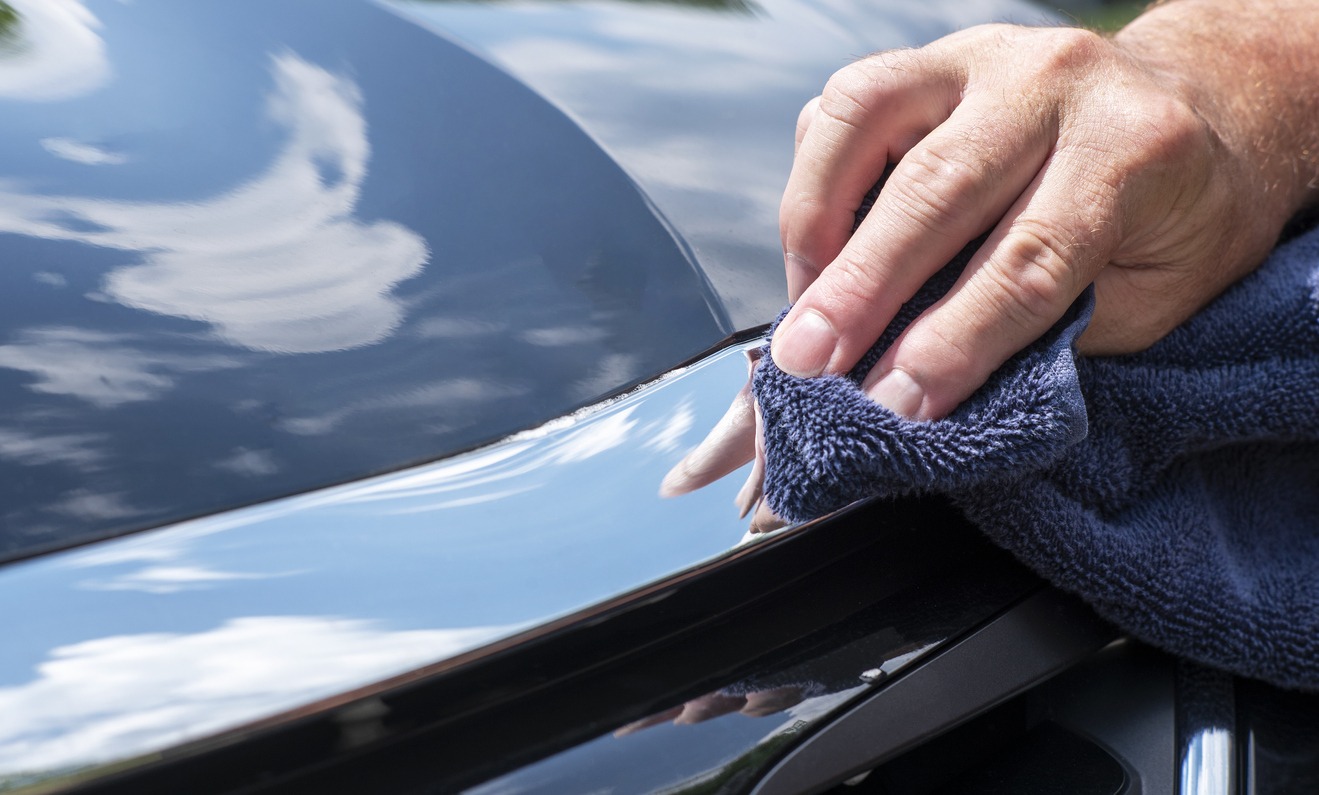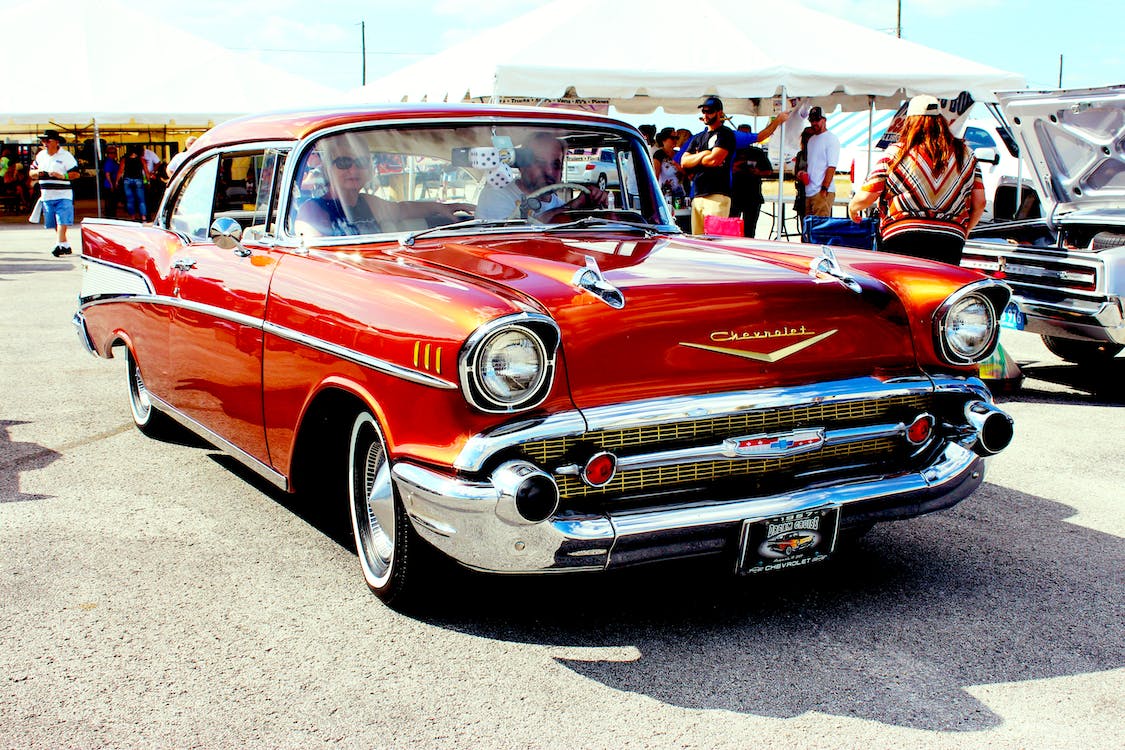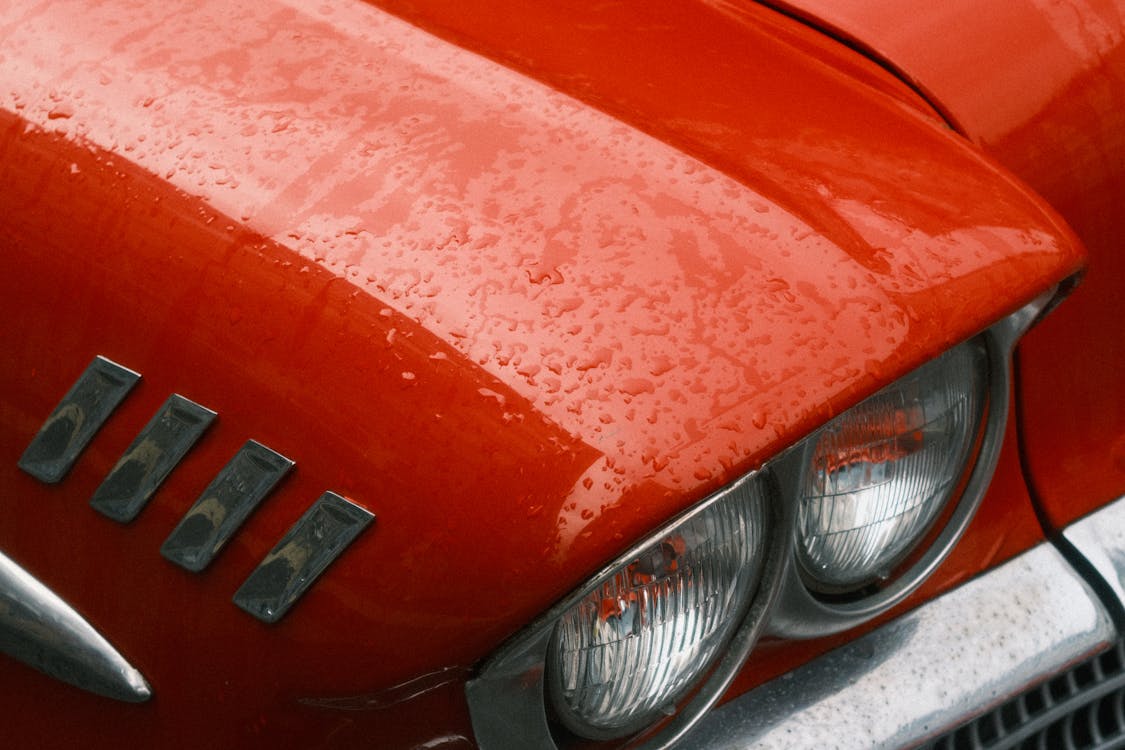Chrome bumpers are a classic feature on many vintage and muscle cars, lending a bright, mirror-like finish to the vehicle’s exterior. Over time, these lustrous accents can succumb to the elements, developing rust and losing their shine. However, car enthusiasts and restorers alike will be pleased to know that chrome bumpers can indeed be restored. Through a process that requires patience and attention to detail, the original glory of a vehicle’s chrome fixtures can be reclaimed, preserving the aesthetic and heritage of the automobile.
The restoration of chrome bumpers involves several steps that typically include cleaning, repairing, and sometimes re-plating. For vehicles like classic cars, where authenticity is key, maintaining the chrome parts is essential not only for car shows and events but also for personal satisfaction. While minor blemishes can often be treated at home using common household items, severe cases of corrosion and damage may necessitate professional intervention.
Professionals in chrome restoration use advanced techniques to buff out scratches, remove rust, and sometimes go as far as to reapply the chrome plating. While the latter is a more costly and intricate process, the results ensure that car bumpers not only recover their shine but are also protected against future corrosion. The preservation of these chrome details not only serves aesthetic purposes but also contributes to the overall value of the car, making restoration a worthwhile investment for collectors and enthusiasts.
Understanding Chrome Bumpers
Chrome bumpers have a distinguished presence in automotive history, offering both aesthetic and functional benefits to vehicles. They are, however, susceptible to common issues that can affect their appearance and integrity over time.
History of Chrome in Automotive Design
The use of chrome in automotive design dates back to the early 1920s, when it was first used for its shiny, reflective finish that signified luxury and status. Classic car enthusiasts often seek out original chrome bumpers, as they are integral to the vehicle’s authenticity and style. Chrome plating was applied extensively in the post-war era, becoming a standard in the car industry due to its durability and the sleek look it provided.
Benefits of Chrome-Plated Bumpers
Chrome-plated bumpers serve several advantages:
- Durability: Chrome plating adds a layer of protection, shielding the bumper from minor impacts and road debris.
- Corrosion Resistance: High-quality chrome plating is known for its ability to resist rust and corrosion.
- Aesthetics: The lustrous finish of chrome bumpers provides an appealing contrast to a vehicle’s paintwork, enhancing its overall appeal.
Common Issues and Wear
Despite its benefits, chrome bumpers are not immune to wear and tear. They can experience:
- Corrosion: Over time, chrome can corrode, especially if chipped or exposed to harsh climates.
- Scratches: Improper cleaning methods or road debris can scratch the surface.
- Oxidation: Exposure to elements can dull the bumper’s shine, leading to the need for restoration or replacement.
Owners of vehicles with chrome bumpers must maintain them diligently to preserve their aesthetic and structural integrity.
Assessment and Preparation
Restoring chrome bumpers to their former glory is a meticulous process that begins with a thorough assessment of the damage and careful preparation. This involves inspecting the chrome for any forms of deterioration, stripping away the old chrome and rust, and prepping the surface for the restoration process.
Inspecting for Damage
The initial step in restoring a chrome bumper is a detailed inspection. One should look for signs of rust, pitting, or other forms of corrosion which are common issues that compromise the integrity of the chrome. It is important to assess the extent of the damage to determine the required restoration process.
- Visual Inspection: Check for discoloration, scratches, and dents.
- Physical Inspection: Feel for rough areas that may indicate underlying rust.
Stripping Old Chrome and Rust
Stripping the remaining chrome and rust is essential before one can proceed with restoration. Rust is an issue as it signifies that the chrome plating has been breached, allowing moisture to corrode the underlying metal. The area must be freed of any corrosion products and old chrome to ensure the longevity of the new coating.
- Chemical Stripping: Safely remove old chrome using specific chemical solutions.
- Mechanical Stripping: If necessary, one may need to resort to sanding or abrasive blasting.
Surface Preparation Techniques
Once the old chrome and rust have been stripped off, proper surface preparation techniques are indispensable for a high-quality chrome repair. This preparation will influence the final outcome, ensuring that the new chrome adheres correctly and that the finish is smooth and reflective.
- Cleaning: The metal should be meticulously cleaned to remove all contaminants.
- Polishing: The surface must be polished to a smooth, high-luster finish in readiness for the new plating process.
- Rinsing: After polishing, it is critical to rinse the bumper thoroughly to remove residual polishing compounds.
Restoration Process
Restoring chrome bumpers is a meticulous process that involves several steps to bring back the original shine and functionality. This process can repair damage such as dents and scratches and protect the metal from further corrosion.
Removal of Dents and Scratches
The first step in restoring chrome bumpers is the removal of dents and scratches. Restoration specialists begin by carefully assessing the damaged areas and using precision tools to smooth out imperfections. They may utilize techniques like sanding or filling to ensure a completely even surface, which is essential for optimal adhesion during the re-plating process.
Welding and Repair Services
In cases where chrome bumpers have suffered more severe damage, welding and repair services may be necessary. Experts adept at bumper restoration will employ welding to fill in any holes or to fix broken parts. This is followed by sandblasting to clean the surface and prepare it for further plating. The use of copper plating as an initial layer is common because it helps to provide a smooth foundation and enhances the overall strength and adhesion for subsequent plating layers.
The Electroplating Process
Finally, the bumper undergoes the electroplating process. This involves a series of steps, starting with copper plating, then nickel plating, and finishing with chrome plating. The copper layer provides a smooth base, the nickel layer offers corrosion resistance, and the final chrome layer restores the bumper’s characteristic luster. During electroplating, each layer is meticulously applied through immersion in a chemical bath and the application of an electrical current, which causes the plating material to bind to the bumper’s surface.
Polishing and Sealing
Restoring chrome bumpers to a high shine involves a meticulous polishing process followed by the application of a protective sealant. These steps are essential for achieving a mirror-like finish and safeguarding the chrome from future wear and environmental damage.
Polishing for a Perfect Shine
Firstly, one should clean the chrome bumper thoroughly. After cleaning, they must apply a small quantity of chrome polish to an applicator pad. Using gentle, circular motions, they should work the polish over the surface, paying extra attention to any areas showing signs of corrosion or tarnishing. It is crucial to use non-abrasive tools and to apply even pressure to avoid scratching the bumper. Once the entire surface has been polished, they should remove any remaining polish residue with a clean microfiber cloth, revealing the shine beneath.
Applying Protective Sealant
After polishing, the chrome bumper requires a layer of sealant to preserve its luster and protect it from the elements. One can spray a fine mist of automotive sealant onto the bumper’s surface and then use a soft cloth to distribute it evenly. The sealant forms a barrier, minimizing the risk of rust and tarnish. To ensure long-lasting protection, reapplication of the sealant at regular intervals is recommended.
Maintaining Chrome Bumpers
Chrome bumpers add an attractive finish to a car but require diligent maintenance to keep their shine. Regular upkeep protects them from environmental damage and prolongs their life.
Regular Cleaning and Care
Regular cleaning is vital for maintaining the luster of chrome bumpers. One should clean the bumper with a solution of automotive cleaner and water using a soft sponge to avoid scratches. After cleaning, applying a chrome polish can restore its original shine. A routine of cleaning and polishing should be established to prevent accumulation of dirt and grime.
- Steps for Cleaning:
- Mix automotive cleaner with warm water.
- Gently scrub the bumper with a soft sponge.
- Rinse thoroughly with clean water.
- Dry with a soft, non-abrasive cloth.
Protecting from Environmental Factors
Chrome is susceptible to rust and tarnishing from exposure to rain, road salts, and humidity. To protect chrome bumpers from environmental elements, it’s recommended to apply a coat of wax or sealant, which acts as a barrier against moisture and pollutants. Cars should be stored in a garage when possible to prevent prolonged exposure to harsh weather conditions.
- Protection Checklist:
- Apply wax or sealant regularly.
- Rinse off road salts and chemicals promptly.
- Store the car in a covered area when not in use.
When to Seek Professional Help
Even with meticulous care, chrome bumpers can incur damage that may require professional help. If there are signs of deep scratches, pitting, or rust that one cannot remove, it’s prudent to consult a professional. They have the expertise and equipment to repair or replate chrome bumpers, ensuring the car retains its value and aesthetic appeal.
- Indicators for Professional Help:
- Deep scratches or pits in the chrome.
- Extensive rust that cannot be cleaned off.
- Peeling or flaking of the chrome coating.
Safety and Environmental Considerations
Restoring chrome bumpers involves handling hazardous chemicals and adhering to environmental regulations. Safety protocols and the proper management of materials are crucial to protect both individuals and the environment during the restoration process.
Handling Chemicals and Materials
Restoring chrome requires the use of potent chemicals and materials that may pose health and safety risks if not handled correctly. It is essential that individuals wear protective gear, such as gloves, goggles, and suitable clothing, to mitigate exposure to these substances. A well-ventilated area is necessary for the work to ensure that chemical vapors do not accumulate to unsafe levels, as they can pose respiratory hazards.
- Safety Gear:
- Gloves
- Goggles
- Protective clothing
- Ventilation: Essential to prevent vapor accumulation
- Chemical Storage: Safe and secure to prevent spills and unauthorized access
Compliance with EPA Regulations
Environmental regulations, particularly those from the Environmental Protection Agency (EPA), mandate strict standards for chrome restoration to minimize environmental impact. Facilities must manage waste and emissions responsibly, ensuring contaminants do not enter the environment. Techniques that reduce environmental risks are preferred, and these facilities are often subject to regular inspections to ensure compliance with EPA guidelines.
- Waste Management: Proper disposal of hazardous waste is necessary to prevent pollution.
- Emission Control: Implementation of techniques that reduce air and water pollution during restoration.
- Inspections: Regular checks to ensure adherence to environmental safety standards set by the EPA.
Adhering to these guidelines ensures the well-being of technicians and the preservation of environmental quality.
Choosing the Right Products
When restoring chrome bumpers, the selection of high-quality polishing products is crucial for achieving a shiny, like-new finish. Equally important is understanding the proper application techniques for these products to ensure the best results.
Selecting Quality Polishing Products
Metal Polish:
For those who aim to restore chrome to its original luster, using a metal polish designed specifically for chrome surfaces is essential. Brands such as Mothers are often recommended due to their effectiveness in removing oxidation and rust.
- Recommended Product: Mothers Chrome Polish
Supplies for Application:
It’s important to use the right tools when applying chrome polish.
- Steel Wool: Fine grade (#000 or #0000) steel wool assists in removing heavy oxidation without scratching the surface.
- Sponge: A soft sponge can be used for general application of the polish, ensuring an even coat without abrasive damage.
Best Practices for Product Use
Technique for Application:
Proper application technique is essential for maximizing the effectiveness of the chosen products.
- Use steel wool gently on affected areas to remove rust, then switch to a sponge for applying polish over larger, less damaged areas.
- Apply polish in a circular motion and follow up with a clean, dry cloth to buff the surface to a shine.
Product Frequency and Quantity:
The amount and frequency of product use will vary depending on the level of corrosion and the size of the bumper.
- Metal Polish: Apply a small amount; a little goes a long way.
- Steel Wool & Sponge: Use as needed, depending on the severity of rust and tarnish.
By employing quality products and adhering to best practices for their use, one can effectively restore the appearance of chrome bumpers.
DIY Tips and Techniques
Chrome bumpers can regain their original luster with the right techniques and tools. This section explores practical home remedies and tool recommendations for a successful restoration.
Home Remedy Solutions
For those who prefer to use readily available solutions, certain home ingredients can be effective. They should combine dish soap and water to clean the bumpers and remove dirt and grime. A solution with a mix of soap and water, applied with a cloth or sponge, can serve as an effective preliminary cleaning agent. After cleaning, they should thoroughly dry the surface before any further steps.
- Soap and Water Mixture: Mix a generous squirt of dish soap in a bucket of warm water. Use this to wash away initial surface dirt.
- Vinegar for Rust: For light rust, one can apply white vinegar directly to the affected area, let it sit, and then wipe it clean.
- Baking Soda Paste: A paste made from baking soda and water, when applied with a soft cloth, can help in polishing and minor rust removal.
Tool Recommendations
Restoring chrome requires both patience and the correct tools. Elbow grease alone won’t do; they need the right tools to assist them in the process. A toothbrush can be used to get into tight spaces and detail the bumper.
- Brass Wire Brush: Ideal for scrubbing off stubborn stains and surface rust without scratching the chrome too much.
- Soft Cloths: Microfiber or other soft cloths are essential for applying cleaners and polishes and for the final buffing.
- Sponges: Use for gentle cleaning with soapy water to avoid scratching the chrome surface.
A thorough process that combines these home remedies and tools can efficiently restore the shine to chrome bumpers.
Professional Chrome Restoration Services
When embarking on chrome restoration for vehicles, enthusiasts should seek out professional services that ensure high-quality results. The choice of service provider and understanding of associated costs and timelines are critical to the success of the project.
Evaluating Restoration Service Providers
Selecting a proficient chrome shop is paramount. Customers should verify the provider’s expertise in handling diverse car and motorcycle parts. Providers should demonstrate a successful track record of restoring chrome to a high standard, with detailed before and after comparisons. Certifications and positive reviews further attest to their capability. A credible service often covers various components, from wheel caps to bumpers and grills. One should also consider if a provider specializes in restoration or opts for producing new parts, as in cases where original components are irreparable.
Understanding Costs and Turnaround Time
Prices for chrome restoration services are influenced by the condition of the parts, size, and complexity of the work required. Most providers offer a quote after a thorough evaluation of the parts. Chrome restoration’s typical turnaround time can span from a few days for minor repairs to several weeks for extensive restorations. For precise timelines, customers should directly inquire as the turnaround may vary based on the current production schedule and workload of the service provider. It is advisable for customers to seek clear communication regarding cost and time to align expectations with service realities.
Frequently Asked Questions
Restoring chrome bumpers is a process that many car enthusiasts and vehicle owners are interested in. This section addresses some of the most common queries about cleaning, restoring, and maintaining the chrome finish on car bumpers.
How can oxidized chrome bumpers be cleaned and restored?
Oxidized chrome bumpers can be cleaned with a mild detergent and then polished with a chrome-specific polish to restore their shine. The use of fine steel wool or aluminum foil dipped in water can also help remove rust spots.
What are the steps for restoring chrome on a car bumper?
To restore chrome on a car bumper, one should first clean the bumper with soap and water, remove rust using a commercial rust remover or fine steel wool, apply chrome polish, and finally, protect the finish with a sealant.
How much does it typically cost to rechrome a car bumper?
The cost to rechrome a car bumper varies widely depending on factors like size, condition, and location. It can range from several hundred to a few thousand dollars.
What methods are available for repairing a damaged chrome finish?
Damaged chrome finishes can be repaired by using a chrome repair kit, which generally includes materials to fill scratches and holes, or by re-plating the damaged area professionally.
Can an individual rechrome a chrome bumper using at-home methods?
Rechroming a chrome bumper at home is not typically recommended as it involves complex processes with hazardous chemicals. It is generally safer and more effective to have it done professionally.
Is it possible to repair a chrome bumper without replacing it?
Yes, it is possible to repair a chrome bumper without replacing it. Small scratches and rust can often be treated with polishing and rust removal techniques. For more significant damage, professional rechroming may be necessary.
